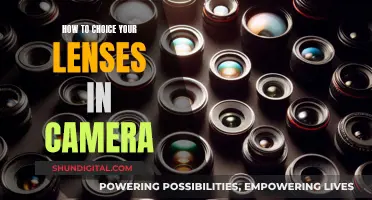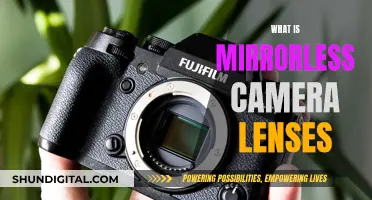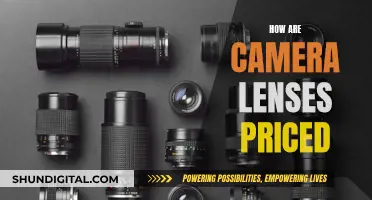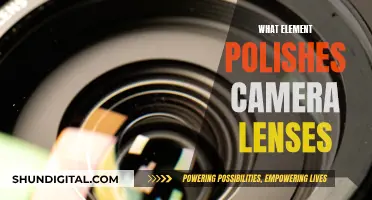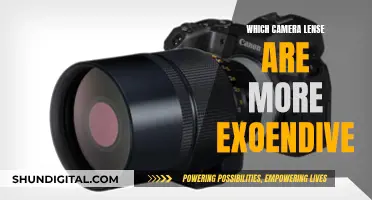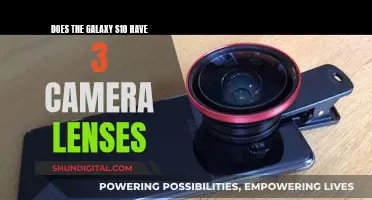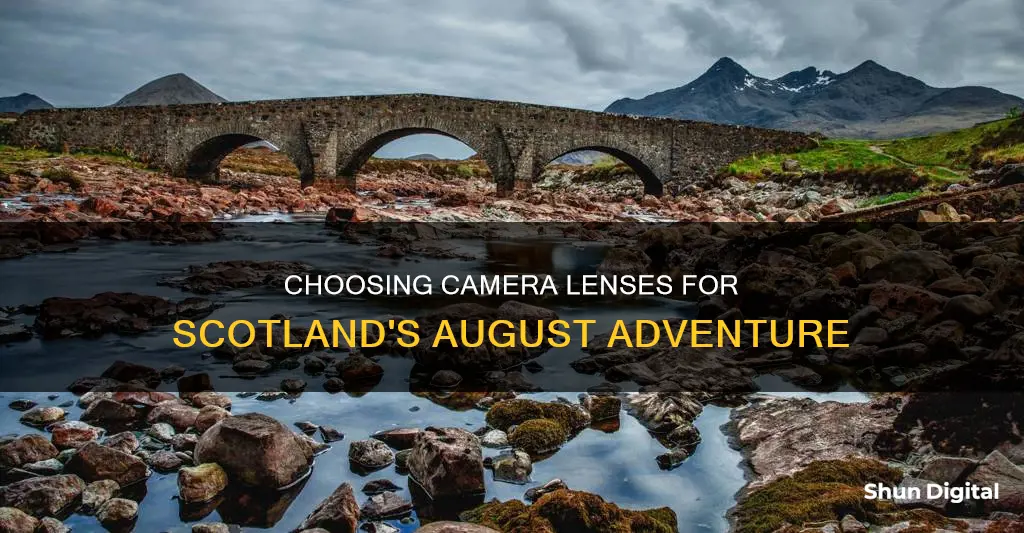
Scotland is a photographer's dream, with its majestic castles, quaint villages, stunning highlands, and dazzling shores. When it comes to camera lenses for a trip to Scotland in August, it's important to consider the types of scenes you plan to capture. Here are some recommendations and tips to help you make the most of your photographic journey:
- Versatility and Convenience: A versatile and compact camera setup is ideal for travelling light and adapting to various scenarios. A mirrorless interchangeable lens camera (MILC) with a crop sensor offers improved battery life, excellent image quality, and a wide range of lens options.
- Wide-Angle Lenses: Wide-angle lenses are perfect for capturing Scotland's sweeping landscapes and open spaces. Consider lenses with a focal length of at least 14mm to capture the full beauty of the scenery.
- Zoom Lenses: Zoom lenses are great for getting up close and personal with the mountains, wildlife, or specific details in the scenery. They provide flexibility and allow you to capture a variety of subjects without having to change lenses frequently.
- Landscape Photography: If you're specifically interested in landscape photography, consider investing in a sturdy tripod, ND filters, and a cable or remote release to avoid disturbing the camera during long exposures.
- Seasonal Considerations: Scotland's weather and lighting conditions vary with the seasons. August is part of the high season, so expect busier locations and milder temperatures. The long summer days offer ample time for exploration and photography, especially during sunrise and sunset.
- Popular Locations: Some of the most photographed places in Scotland include the Isle of Skye, with its craggy mountains and enchanting lochs, and Edinburgh, with its medieval streets and coastal backdrop. Other popular spots are Calton Hill, Glen Coe, Ben Nevis, and Eilean Donan Castle.
- Wildlife and Nature: Scotland is home to a diverse range of wildlife, including stags, Highland cows, red squirrels, pine martens, red deer, and otters. The coasts are ideal for spotting marine life such as whales, seals, and dolphins. Don't forget to look up and capture the array of birdlife, including puffins, red kites, and golden eagles.
- Cityscapes and Architecture: For cityscape and architectural photography, consider bringing lenses that offer a range of focal lengths. This will allow you to capture both wide streets and cobblestone lanes, as well as intricate architectural details.
- Lochs and Beaches: Scotland's lochs and beaches offer unique photographic opportunities. Consider visiting Loch Lomond, Loch Morar, or Loch Ness for sparkling waters and island views. For dramatic sunsets, head to west-facing beaches like Camusdarach, Elgol, or the white sands of Luskentyre.
| Characteristics | Values |
|---|---|
| Camera body | Sony A7rii, Canon EOS R7, Nikon D750, Fujifilm X-T2 |
| Lens type | Wide angle, zoom, telephoto, prime, fisheye |
| Lens focal length | 10-24mm, 14-24mm, 16-35mm, 18-55mm, 24-70mm, 24-120mm, 24-240mm, 50-230mm, 55-200mm, 70-200mm, 100-400mm, 105mm, 135mm, 150-600mm |
| Other equipment | Tripod, bean bag, graduated ND filters, circular polarising filter, extra memory cards, extra batteries, battery charger, UK plug adapter |
What You'll Learn

Wide-angle lenses for landscapes
Wide-angle lenses are a must-have for any landscape photographer. They are so closely associated with the genre that they are often referred to as 'landscape lenses'. While this is an overgeneralisation, it is true that most landscapes are shot using shorter focal lengths.
Technically, a lens is considered wide-angle if the field of view is greater than 65º, which is roughly equivalent to a focal length of 35mm on a full frame. However, many photographers would only consider lenses of 28mm or wider to be 'true' wide-angles.
Wide-angle lenses are popular with landscape photographers because their extensive field of view makes it possible to capture sweeping vistas. They also have a distinctive look and character, and there is more to them than simply their ability to 'get a lot in the frame'.
Wide-angle lenses allow you to get very close to a subject, which then looms large in the frame. The distance between the subject and background appears to increase, producing a real sense of drama. They also exaggerate perspective and the way distortion stretches objects in the corners helps to pull the eye into a composition.
A final defining characteristic of wide-angle lenses is their inherently large depth of field, meaning you can keep everything sharp from the immediate foreground to the horizon.
When composing wide-angle landscape scenes, think foreground. Wide-angles come into their own when you get in close to foreground interest to create dramatic perspective. Shapes are important; diagonal lines and triangles pull the eye in, whereas squares and rectangles tend to block.
When choosing a wide-angle lens, remember that zooms offer more flexibility when it comes to finding the ideal spot and then framing the shot precisely. Often, you’ll see that there are two versions of a lens on offer: one with a fast maximum aperture (e.g. f/2.8), and one with a more modest maximum (e.g. f/4). The latter will usually be cheaper, lighter, and more compact.
So unless you plan on doing a lot of astrophotography, or reviews suggest a significant difference in image quality, save yourself some money and weight and get the slower lens. If you do get a faster lens, try to avoid those with a protruding front element. It is difficult to use filters with these lenses, and the filter systems which are available are bulky, awkward to handle, and expensive.
Switching Camera Lenses: A Step-by-Step Guide for Beginners
You may want to see also

Zoom lenses for wildlife
Wildlife photography is a challenging field, and the right lens can make a big difference. When it comes to zoom lenses for wildlife photography, there are a few categories to consider:
Budget Long Zoom Lenses
These lenses typically start at around 100mm and go up to 400mm or 600mm. They are a great option if you want to capture a variety of wildlife at different distances and don't want to break the bank. Some popular options include the Tamron 150-600 G2 and the Sigma 150-600mm Contemporary, which offer excellent value for money. Newer budget zoom lenses, such as the Sony 200-600mm, Canon 100-500mm, and Nikon 180-600mm, also provide impressive image quality.
High-End Zoom Lenses
High-end zoom lenses are constant-aperture lenses known for their exceptional image quality. They are usually larger and more expensive, with shorter focal length reach. An example is the Nikon 180-400mm f/4E, which has a built-in teleconverter. The Olympus ED 150-400mm f/4.5 is another option, offering an 800mm equivalent focal length and excellent image quality.
Wide Aperture Prime Lenses
The traditional prime lenses for wildlife photography are the 500mm and 600mm f/4 lenses. These lenses are extremely sharp and have fast autofocus, but they are also heavy and expensive. If you don't need such a long focal length, the Nikon Z 400mm f/4.5 or the Nikon 300mm f/4 PF are excellent alternatives.
Narrow Aperture Primes
This category includes longer focal length telephoto prime lenses with narrower maximum apertures, often featuring Fresnel lens elements to reduce weight. Examples include the Canon 400mm f/4 DO II and the Nikon 500mm f/5.6 PF, which offer excellent optical quality at a lower weight and price.
When choosing a zoom lens for wildlife photography, consider factors such as focal length, image quality, weight, and price. It's also important to think about the type of wildlife you'll be photographing and the shooting conditions you'll encounter.
Sigma Lenses: Compatible with Full-Frame Cameras?
You may want to see also

Tripod for low-light conditions
When packing for a trip to Scotland in August, it's important to consider the lighting conditions you'll be shooting in. Scotland's summer days are long, with the sun setting after 9 pm, but you may still encounter low-light conditions, especially if you're shooting indoors or in the evening. A tripod can be a useful tool in these situations, providing stability and allowing for longer exposures. Here are some tips and recommendations for choosing a tripod for low-light photography in Scotland:
Consider a Travel Tripod
Travel tripods are designed to be lightweight and compact, making them ideal for travelling photographers. They often feature carbon fibre construction, which is both lightweight and durable. When choosing a travel tripod, look for one that strikes a balance between portability and stability. Some recommended options include:
- Peak Design Travel Tripod: This premium tripod is compact and easy to set up, but it may not be tall enough for all users.
- Benro Rhino FRHN24C+VX25 Head: A versatile option that can convert into a monopod, making it suitable for various shooting situations.
- Vanguard VEO 3 GO 204CB Carbon Fiber Tripod: An extremely lightweight option that can fold down to a small size, making it perfect for hiking and remote locations.
- Manfrotto Befree Advanced Travel Tripod: A sturdy and reliable tripod that's great for videographers due to its smooth ball head.
- Joby GorillaPod 3K Pro Kit: A unique and flexible tripod that can wrap around objects like tree branches, providing stability on uneven surfaces.
Pay Attention to Weight and Stability
When choosing a tripod, consider the weight of your camera and lens setup. You'll need a tripod that can comfortably support your gear while still being portable. Additionally, look for tripods with features that enhance stability, such as adjustable legs and rubber feet.
Consider Your Maximum Height
Think about the types of shots you want to capture and choose a tripod that can extend to an appropriate height. If you're shooting landscapes or need to capture images from a higher perspective, opt for a taller tripod. On the other hand, if you plan to shoot at eye level or want to get low to the ground, a shorter tripod may be more suitable.
Practice Low-Light Techniques
In addition to using a tripod, there are several techniques you can employ to improve your low-light photography. These include increasing your ISO setting, using Live View mode to reduce camera shake, and utilising high-speed burst mode to capture sharp images. Experiment with these techniques before your trip to familiarise yourself with the settings and improve your handheld low-light photography skills.
Pack Smart
When travelling with a tripod, consider its weight and portability. Choose a tripod that can easily fit into your luggage or camera bag. Some tripods come with dedicated travel bags or cases, making transport even more convenient. Additionally, practice setting up and taking down your tripod to ensure a smooth and efficient process when you're on the move.
Microscopic Dust: A Camera Lens Issue?
You may want to see also

Filters for glare reduction
When shooting in Scotland in August, you may encounter issues with glare, especially when photographing people, landscapes, or cityscapes. To reduce glare, you can use filters, such as polarizing filters, which reduce reflections and improve image quality.
Polarizing filters are effective at minimising reflections from water or glass surfaces. They work by cutting off UV light and reducing light that is polarized in the direction of the reflected light. This not only improves the overall look of the image but also enhances colour saturation and contrast.
When using a polarizing filter, it is important to consider the angle of the light source and the surface being photographed. Polarizing filters work best when the light is incident at Brewster's angle, which is around 35 degrees for water and 56 degrees for ordinary glass.
In addition to polarizing filters, you can also use tools like Fotor's glare remover to fix glare issues in post-processing. This software allows you to remove sun glare, light glare, flash glare, and glasses glare from your photos, making them more natural and attractive.
By utilising these techniques, you can effectively reduce glare and capture stunning images during your trip to Scotland in August.
Directv Protection Plan: What Camera Lens Damage Is Covered?
You may want to see also

ND filters for long exposures
When it comes to ND filters for long exposures in Scotland, here's what you need to know and consider:
Types of ND Filters
ND filters come in various styles, including circular ones that screw into the lens thread and square ones that slot into a filter holder. Graduated ND filters, which are clear on one half and gradually get darker on the other half, are also available, but standard ND filters are more commonly used for long exposures.
ND Filter Density
The density of ND filters varies, typically ranging from 1-stop to 10-stops. Each filter density is associated with a specific number of f-stops and optical density (EV) that it can reduce. For example, a 0.9 filter will reduce your shutter speed by 3 EV stops. It's important to note that as you increase the density of the ND filter, your shutter speeds will become longer, requiring the use of a tripod to avoid blurry images.
Camera Settings for Long Exposures with ND Filters
When using ND filters for long exposures, it's recommended to shoot in Manual mode to have full control over your camera settings. Set your camera to its lowest ISO value, preferably ISO 100, to reduce noise in your images. Choose an aperture between f/8 and f/16 to avoid diffraction. Calculate the exposure time based on the strength of your ND filter using an ND filter exposure chart or the formula: Adjusted Shutter Speed = Original Shutter Speed x ND Filter Factor.
Equipment for Long Exposures with ND Filters
In addition to your camera and ND filter, you will need a sturdy tripod to minimise camera shake during long exposures. A remote shutter release or cable release is also essential to trigger the camera without physically touching it, further reducing camera shake. Additionally, consider using a dark cloth to cover the viewfinder to prevent light leakage, especially when shooting in bright conditions.
Creative Effects with ND Filters
ND filters allow you to capture creative effects in your long-exposure photography. You can blur the motion of water, turning waves into silky-smooth textures or rivers into serene ribbons of light. Moving clouds will streak across the sky, adding drama and depth to your landscape photographs. You can also use long exposures with ND filters to eliminate moving objects from crowded urban scenes or tourist spots.
Tips for Long Exposures with ND Filters
- Use manual focus and set your focus before attaching the ND filter to ensure sharpness in your images, especially in low-light conditions.
- Check for light leaks by ensuring the filter is securely attached, and cover the viewfinder with a cloth if needed.
- Be mindful of colour casts that some ND filters may introduce. You can correct colour casts during post-processing by adjusting the white balance.
- Consider shooting on days when clouds are low and moving dynamically to add drama to your photos.
- Avoid touching the camera during the exposure. Use a remote shutter release or timer to capture shots without introducing camera shake.
- In extremely bright conditions, you can stack two ND filters to achieve greater light reduction if needed for your desired effect.
Clean Your Phone Camera Lens Scratch-Free
You may want to see also
Frequently asked questions
Wide-angle lenses are the most effective for capturing Scotland’s sweeping views and open landscapes. Zoom lenses are also recommended for close-up details of the mountains, or to photograph local wildlife.
For cityscape photography in Scotland, you will want to bring a mix of wide-angle and telephoto lenses. A standard zoom lens will do the job, but for more serious photography, consider bringing a tripod and a lens with a focal length of at least 70mm.
For street photography in Scotland, a 50mm prime lens is a good option. If you want to get more creative, consider bringing a wide-angle lens (24mm or wider) to capture more of the scene, or a telephoto lens to compress the scene and create a more intimate feel.
Scotland is known for its changeable weather, so be prepared for rain and strong winds. Also, the sun can be very low in the sky, even in summer, so consider bringing a lens with a large aperture to capture the best light. Finally, don't forget to pack extra memory cards and batteries, as you will likely be taking a lot of photos!


